Mammalian BCAS3 and C16orf70 associate with the phagophore assembly site in response to selective and non-selective autophagy
- PMID: 33499712
- PMCID: PMC8386740
- DOI: 10.1080/15548627.2021.1874133
Mammalian BCAS3 and C16orf70 associate with the phagophore assembly site in response to selective and non-selective autophagy
Abstract
Macroautophagy/autophagy is an intracellular degradation process that delivers cytosolic materials and/or damaged organelles to lysosomes. De novo synthesis of the autophagosome membrane occurs within a phosphatidylinositol-3-phosphate-rich region of the endoplasmic reticulum, and subsequent expansion is critical for cargo encapsulation. This process is complex, especially in mammals, with many regulatory factors. In this study, by utilizing PRKN (parkin RBR E3 ubiquitin protein ligase)-mediated mitochondria autophagy (mitophagy)-inducing conditions in conjunction with chemical crosslinking and mass spectrometry, we identified human BCAS3 (BCAS3 microtubule associated cell migration factor) and C16orf70 (chromosome 16 open reading frame 70) as novel proteins that associate with the autophagosome formation site during both non-selective and selective autophagy. We demonstrate that BCAS3 and C16orf70 form a complex and that their association with the phagophore assembly site requires both proteins. In silico structural modeling, mutational analyses in cells and in vitro phosphoinositide-binding assays indicate that the WD40 repeat domain in human BCAS3 directly binds phosphatidylinositol-3-phosphate. Furthermore, overexpression of the BCAS3-C16orf70 complex affects the recruitment of several core autophagy proteins to the phagophore assembly site. This study demonstrates regulatory roles for human BCAS3 and C16orf70 in autophagic activity.Abbreviations: AO: antimycin A and oligomycin; Ash: assembly helper; ATG: autophagy-related; BCAS3: BCAS3 microtubule associated cell migration factor; C16orf70: chromosome 16 open reading frame 70; DAPI: 4',6-diamidino-2-phenylindole; DKO: double knockout; DMSO: dimethyl sulfoxide; ER: endoplasmic reticulum; fluoppi: fluorescent-based technology detecting protein-protein interactions; FIS1: fission, mitochondrial 1; FKBP: FKBP prolyl isomerase family member 1C; FRB: FKBP-rapamycin binding; hAG: humanized azami-green; IP: immunoprecipitation; IRES: internal ribosome entry site; KO: knockout; MAP1LC3B/LC3B: microtubule associated protein 1 light chain 3 beta; MFN2: mitofusin 2; MS: mass spectrometry; MT-CO2: mitochondrially encoded cytochrome c oxidase II; mtDNA: mitochondrial DNA; OPTN: optineurin; PFA: paraformaldehyde; PE: phosphatidylethanolamine; PtdIns3K: phosphatidylinositol 3-kinase; PtdIns3P: phosphatidylinositol-3-phosphate; PtdIns(3,5)P2: phosphatidylinositol-3,5-bisphosphate; PINK1: PTEN induced kinase 1; PRKN/Parkin: parkin RBR E3 ubiquitin protein ligase; PROPPIN: β-propellers that bind polyphosphoinositides; RB1CC1/FIP200: RB1 inducible coiled-coil 1; TOMM20: translocase of outer mitochondrial membrane 20; ULK1: unc-51 like autophagy activating kinase 1; WDR45B/WIPI3: WD repeat domain 45B; WDR45/WIPI4: WD repeat domain 45; WIPI: WD repeat domain, phosphoinositide interacting; WT: wild type; ZFYVE1/DFCP1: zinc finger FYVE-type containing 1.
Keywords: Mitophagy; parkin; phagophore; pink1; starvation; wd40.
Conflict of interest statement
No competing interests declared
Figures
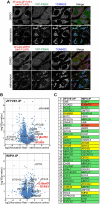
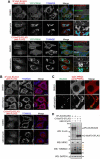

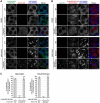

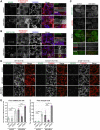
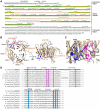


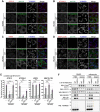

Similar articles
-
Emerging views of mitophagy in immunity and autoimmune diseases.Autophagy. 2020 Jan;16(1):3-17. doi: 10.1080/15548627.2019.1603547. Epub 2019 Apr 21. Autophagy. 2020. PMID: 30951392 Free PMC article.
-
Organelle-specific autophagy in inflammatory diseases: a potential therapeutic target underlying the quality control of multiple organelles.Autophagy. 2021 Feb;17(2):385-401. doi: 10.1080/15548627.2020.1725377. Epub 2020 Feb 12. Autophagy. 2021. PMID: 32048886 Free PMC article. Review.
-
Artificial targeting of autophagy components to mitochondria reveals both conventional and unconventional mitophagy pathways.Autophagy. 2025 Feb;21(2):315-337. doi: 10.1080/15548627.2024.2395149. Epub 2024 Sep 8. Autophagy. 2025. PMID: 39177530 Free PMC article.
-
Clearance of damaged mitochondria via mitophagy is important to the protective effect of ischemic preconditioning in kidneys.Autophagy. 2019 Dec;15(12):2142-2162. doi: 10.1080/15548627.2019.1615822. Epub 2019 May 22. Autophagy. 2019. PMID: 31066324 Free PMC article.
-
How autophagy controls the intestinal epithelial barrier.Autophagy. 2022 Jan;18(1):86-103. doi: 10.1080/15548627.2021.1909406. Epub 2021 Apr 27. Autophagy. 2022. PMID: 33906557 Free PMC article. Review.
Cited by
-
MYTHO is a novel regulator of skeletal muscle autophagy and integrity.Nat Commun. 2023 Mar 2;14(1):1199. doi: 10.1038/s41467-023-36817-1. Nat Commun. 2023. PMID: 36864049 Free PMC article.
-
Inhibition of autophagy; an opportunity for the treatment of cancer resistance.Front Cell Dev Biol. 2023 Jun 9;11:1177440. doi: 10.3389/fcell.2023.1177440. eCollection 2023. Front Cell Dev Biol. 2023. PMID: 37363731 Free PMC article. Review.
-
Role of Autophagy in Type 2 Diabetes Mellitus: The Metabolic Clash.J Cell Mol Med. 2024 Dec;28(23):e70240. doi: 10.1111/jcmm.70240. J Cell Mol Med. 2024. PMID: 39656379 Free PMC article. Review.
-
Dysregulation of pancreatic β-cell autophagy and the risk of type 2 diabetes.Autophagy. 2024 Nov;20(11):2361-2372. doi: 10.1080/15548627.2024.2367356. Epub 2024 Jun 18. Autophagy. 2024. PMID: 38873924 Free PMC article. Review.
-
C16ORF70/MYTHO promotes healthy aging in C.elegans and prevents cellular senescence in mammals.J Clin Invest. 2024 Jun 13;134(15):e165814. doi: 10.1172/JCI165814. J Clin Invest. 2024. PMID: 38869949 Free PMC article.
References
-
- Mizushima N, Komatsu M. Autophagy: renovation of cells and tissues. Cell. 2011;147(4):728–741. - PubMed
Publication types
MeSH terms
Substances
LinkOut - more resources
Full Text Sources
Other Literature Sources
Molecular Biology Databases
Research Materials
Miscellaneous
